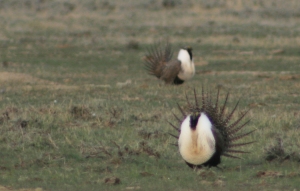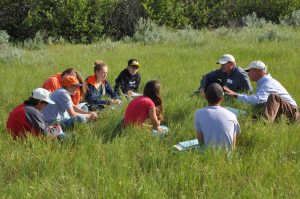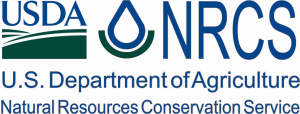B y Jay Bodner, MSGA Director of Natural Resources
y Jay Bodner, MSGA Director of Natural Resources
Governor Bullock established by Executive Order the Greater Sage-grouse Habitat Conservation Advisory Council on February 2, 2013. In April 2013, the Governor appointed the 12-member Council to gather information, furnish advice, and provide to the Governor recommendations on policies and actions for a state-wide strategy. The goal of this planning effort is to preclude the need to list the Greater Sage-grouse under the Endangered Species Act (ESA). The Council was directed to complete their recommendations by no later than January 31, 2014. The Council is co-chaired by FWP Director, Jeff Hagener, and the Governor’s Natural Resources Policy Advisor, Tim Baker. Council members include representatives from agriculture and ranching, conservation and sportsmen, energy, mining and power transmission, tribal government, local government and the legislature.
The Advisory Council has held a series of nine meetings for the development of a draft strategy. During the meeting focused on agriculture, MSGA members Leo Barthemess (Malta) and Jim Hagenbarth (Dillon) were featured speakers explaining a ranching perspective on sage grouse management.
The Advisory Council completed a draft Conservation Strategy and held seven public hearings in Montana in primary sage-grouse areas, and well over 450 people attended the public hearings. During the hearings the draft strategy was outlined by FWP personnel, the public had the opportunity to ask questions about the draft strategy and provide public testimony on the document.
The Advisory Council also held a 34-day comment period to offer written comments on the draft strategy. The comment period closed on December 4, 2013 and 377 comments were received. MSGA provided comments on the draft plan, focusing on:
- Stronger provisions regarding the Predator Section
- Allowing flexibility to sage brush treatments
- Consistency with the WY Plan, in regards to the No Surface Occupancy. Recommend reducing the buffer around leks from 1mile to 0.6 miles.
Included in the comments, were most notably, the comments from the U.S. Fish and Wildlife Service (USFWS). This is the agency that will determine the adequacy of the draft plan. The USFWS comments were very extensive and in MSGA’s review, the USFWS indicated that the plan did not include enough protections for sage grouse. MSGA was disappointed in their comments as it related to private property. The USFWS stated,
In Montana, proposed core habitat often occurs across a fragmented private / government ownership pattern, complicating landscape-scale management. Approximately 54% of proposed core habitat occurs in private ownership. This high proportion of core habitat occurring on private lands may provide limited value for sage grouse depending on the regulatory scope associated with the Montana Strategy in these areas.
Private landowners in Montana are critical factor in ensuring a healthy population of sage grouse, along with other wildlife. It is MSGA’s belief that the landowner should be commended for their efforts and not faced with possible additional regulations. MSGA also worked with the MT Farm Bureau Federation, DNRC and Council members to address the USFWS concerns in the “Range Management” Section of the draft Plan. This work group developed language that was submitted to the entire Council for their consideration.
During the January 14-15, 2014 Council meeting, the Advisory Council reviewed public comment and modified and finalized the draft plan. The Advisory Council will provide the document to the Governor by the end of the month, for his consideration. The Governor has the option to accept, modify or reject the Advisory Council’s recommendations. After finalizing Montana’s sage grouse strategy and developing an implementation plan, the Governor will submit Montana’s sage-grouse conservation strategy to the USFWS for its review. After reviewing the strategy, it is anticipated that the Service will notify the Governor about the strategy’s adequacy.
MSGA plans to review the final document as soon as it is available and also provide it to our members. If any members have questions or additional comments on the plan, please contact the office.

















Comments Needed on New State Land Access Program Rule
The Montana Fish & Wildlife Commission is seeking comment on a proposed rule that would offer tax incentives to private landowners who provide public access to state lands.
The proposed rule is in response to a new law that established the Unlocking State Lands Program. Under the program, landowners can receive a $500 tax credit by providing public access to a parcel of state land through contractual agreements with Montana Fish, Wildlife & Parks. A tax credit would be offered for each qualified access point, with a limit of $2,000 per year, per landowner.
The law requires the commission to adopt administrative rules for establishing contracts that address duration of access, types of qualified access, and reasonable landowner-imposed restrictions.
The law becomes effective Jan. 1, 2014 and terminates Dec. 31, 2018.
Public comment on the draft rule will be accepted through, Dec. 27. Copies of the draft rule and comment forms are available online at fwp.mt.gov, click “Public Notices“. E-mail comments to [email protected]; or mail to Alan Charles, Montana Fish, Wildlife & Parks, P.O. Box 200701, Helena, MT 59620-0701.